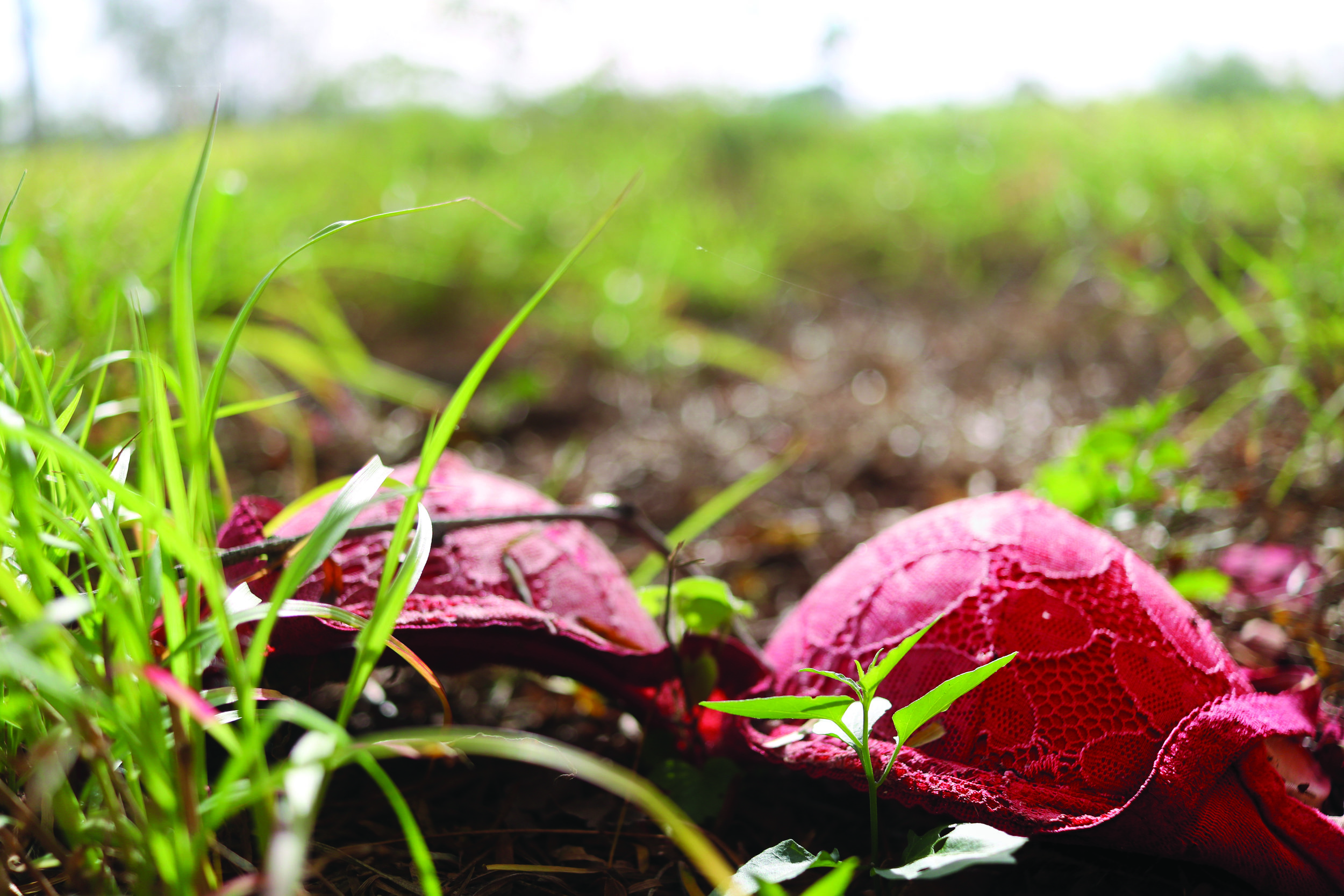The Rio Grande River, steel-gray and smooth, cuts into the land between Mexico and the United States just 100 yards away from where this pink-lace bra lies discarded in the backlot of an abandoned building. It doesn’t take long to wonder: who did the bra belong to? Was it a woman who crossed the cold waters, freeing herself of her heavy, soaked clothes to change into something dry before moving on? Where might she be now?
From 1993 to 2008, at least 500 women were murdered along the border. Many of the femicide victims lived on the Mexico side, working in maquiladoras, factories created when the North American Free Trade Agreement (NAFTA) was signed in 1994. They were often brutally murdered, mutilated, and left to rot. Their deaths underscore a dark, misogynistic reality of the borderlands.
But the borderland is also home to women who own businesses, go to university, and run for office—to young girls who aspire to be doctors. Mariam El-Haj acknowledges the machismo culture of the valley, but explains how that image is incomplete, “It’s extremely safe here, but there’s this misconception that it’s not. A lot of the media talks about this region being filled with drug dealers, and I guess just unsafe practices and ways of life. But I don’t see it when I’m walking down the street. I don’t feel necessarily scared when I’m going to my car at night. I don’t feel like I’m going to be kidnapped … those messages [are] put into the media by people who have never been here.”
Hundreds gather to protest at the Santa Ana National Wildlife Refuge in Alamo, Texas, on January 27, 2018. A large blue-and-white striped tent sits at the edge of a tilled field that marks the boundary of the refuge, a tropical forest teeming with prickly pear cactus, bird calls, and paths that wind through 2,088 acres up to the banks of the Rio Grande River. Poets, journalists, musicians, students, mothers, undocumented immigrants, kids, generation-long residents of the valley, revolutionaries, and countless others all rallied to raise their voices against the construction of a border wall that would run directly through the wildlife refuge. At the demonstration, Martha Garcia said, “The whole park will be closed. It’s going to be demolished.”
On February 10, just two weeks after the protest, The New York Times reported that the federal government approved the construction of a three-mile wall through the Santa Ana National Wildlife Refuge. The Times article states, “Border Patrol officials have publicly said they would try to start wall construction in Santa Ana since it’s already government property.” Krista Schlyer, an award-winning photographer and writer invited to speak at the rally, directed her speech to government officials, saying, “We’re here today to make them listen. We’re here to tell them the borderland is not a bargaining chip. We’re here to tell them to pass a Clean Dream Act now. We’re here to tell them, ‘NO BORDER WALL.’ We’re here to tell them: ‘Don’t mess with Santa Ana.’”

